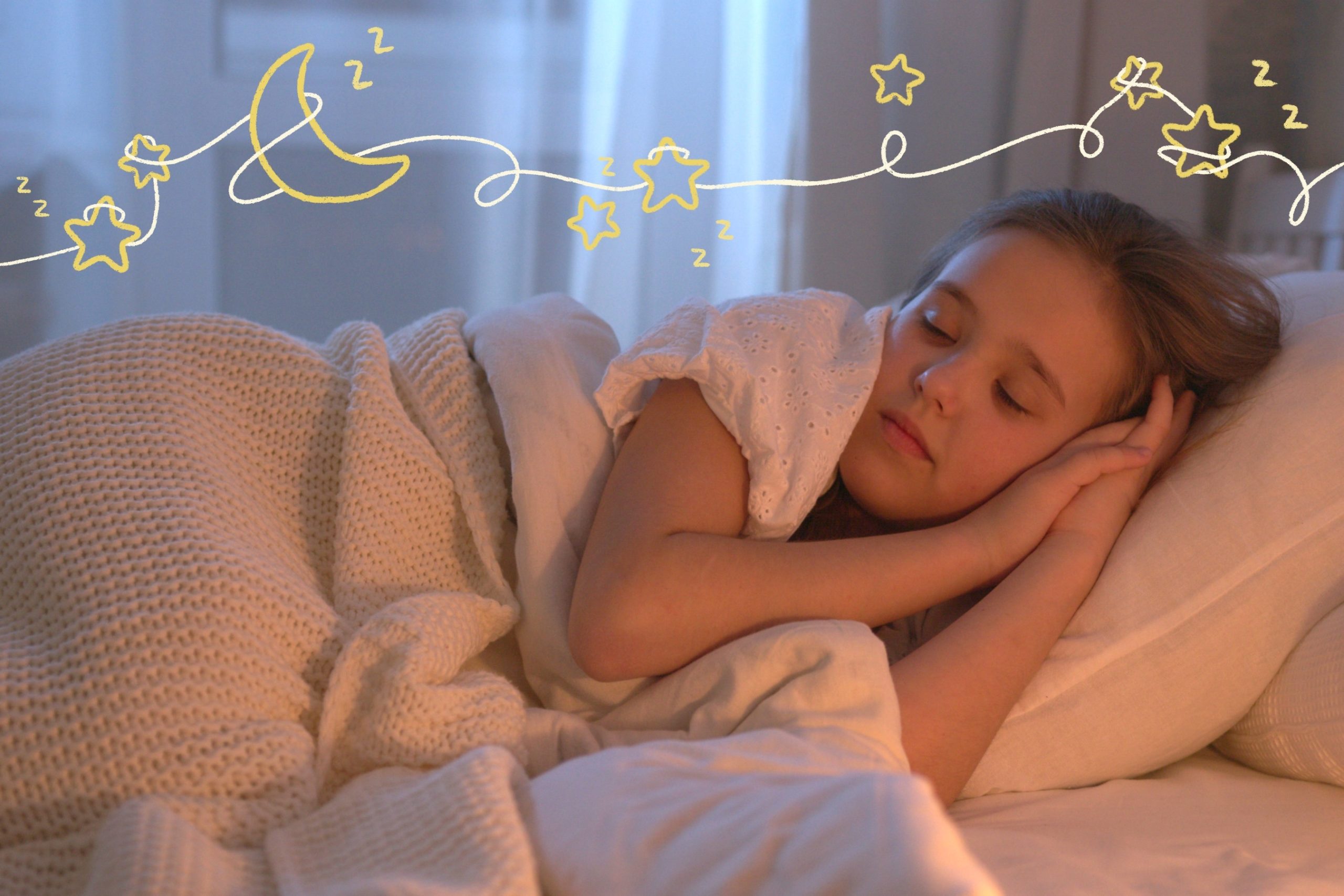
Your Most Pressing Sleep Questions, Answered!
We partnered with our friends at Khan Academy Kids to learn what sleep topics are on the minds of parents. There were so many that this is part 1 of a two-part blog post addressing all of your questions. And, thank you to our friend and sleep expert, Dr. Azizi Seixas for his contribution to answering all of these great questions!
Q: What is an appropriate bedtime for a 3-year-old? And how do I know what an “appropriate” bedtime is for him/her as he/she gets older?
- Biological need: Three years olds typically require 10-13 hours of sleep daily. Therefore, parents should base their child’s bedtime on the amount of sleep required for healthy growth and development at this age. Coupled with getting the required amount of sleep is ensuring a consistent bedtime and waketime
- Identify behavioral cues: Observing your child’s behaviors is the first step in establishing an appropriate bedtime. The goal is to start the bedtime routine before they are completely exhausted. Some children show they are ready to wind down by slowing down and some show you that they are ready by exerting all of their extra energy. What signs does your child give that they are ready for bed? When does this typically start to happen?
- Reverse Engineer: 1) Determine when your child has to wake up and work backward to see when they should go to bed. 2) Next, work backward from when you want your child in the bed. How long does it take for the entire bedtime routine? What most helps your child get ready for bed and in what sequence. Set a realistic timeframe that works best for your child and also the ethos of your home.
Q: If my kid is waking up too early in the morning (like, 5:30 am), what can I do? Do I push back his bedtime?
- There are several reasons why your child might be waking up early. For young children, waking up early is common because their sleep and circadian cycles are constantly evolving.
- If your child is naturally waking up at 5:30 am, set up a routine for when the day actually gets started. If your child is old enough to be in a bed and independently get up, establish some activities that they can do until it’s time to get started. For example, set up the routine that 6:30 am is when you will get dressed and have breakfast. Until then, they can read, color, play with legos, dolls or other activities that are quiet and be played alone. Encourage your child to use this time to wake up their body and brain and that resting in bed is an okay thing to do. If you have technology in the room, like Alexa, teach your child how to ask Alexa for music or a story.
Q: How do you get the little one to nap if the big one isn’t napping. (They share a room so it is very apparent that the other one isn’t napping.)
- Create a nap routine for both children. “Nap” can be loosely defined as a time when we rest our bodies and allow our brains to reset. For the older child, this may be reading books quietly, listening to stories, books, or music through earphones, or writing/coloring. If both kids are in their beds, the consistent message is that nap time is for resting and for some this means sleeping and for some, this means being away but calm.
Q: How do I know when my child is ready to switch from a crib to a bed?
- The general rule of thumb is to move your child into a toddler bed before they’re able to climb over the crib’s railings and get into danger. Typically, this happens between 18 months and around three years old, or when kids reach close to three feet tall. Set up the new bed and allow your child to have quiet time or even nap on the bed before transitioning officially from the crib to the bed for overnight sleeping. This will allow your child to make positive associations with the new bed and get excited about their first big kid overnight!
Q: How do we transition from a co-sleeping situation to separate rooms?
- There are a few steps to take to make this a peaceful transition that feels good for both parents and children
- Increase the space between you and your child. Try a bedside co-sleeper or bassinet. When this feels comfortable, try moving your child a bit further away from your bed, perhaps across the room if space allows.
- Eliminate co-sleeping at naptime first. This will give your child a try at falling asleep alone for a shorter period of time.
- Familiarize your child with their new sleeping space. Spend time in their new bed reading or listening to music or stories to acclimate to what it will feel like.
- Establish a consistent bedtime routine. Perhaps you lay with your child for a few minutes in their new bed, reading, snuggling, or listening to a story. Gradually decrease the amount of time you spend with your child before they are sleeping.
Q: My child keeps coming out of their room after bedtime. I’m not doing anything fun, but they seem to think they are missing something. How do I convince them to stay in bed?
- Bedtime stories are great for this situation. They help define the sleep routine with a calming strategy. One reason kids keep getting up is that they don’t have a strategy to calm down their brains. It’s a hard thing to do for small children who have taken in so many sights and sounds throughout the day. Moshi Stories give children something to focus on while also helping them calm down.
Start your free trial of Moshi today and see why Moshi is the #1 sleep app!